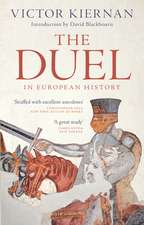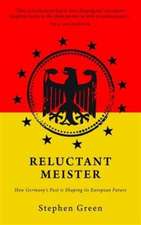The Extreme Right in Interwar France: The Faisceau and the Croix de Feu
Autor Samuel Kalmanen Limba Engleză Paperback – 6 iun 2019
| Toate formatele și edițiile | Preț | Express |
|---|---|---|
| Paperback (1) | 436.14 lei 6-8 săpt. | |
| Taylor & Francis – 6 iun 2019 | 436.14 lei 6-8 săpt. | |
| Hardback (1) | 1054.71 lei 6-8 săpt. | |
| Taylor & Francis – 21 aug 2008 | 1054.71 lei 6-8 săpt. |
Preț: 436.14 lei
Nou
Puncte Express: 654
Preț estimativ în valută:
83.46€ • 86.10$ • 69.64£
83.46€ • 86.10$ • 69.64£
Carte tipărită la comandă
Livrare economică 27 martie-10 aprilie
Preluare comenzi: 021 569.72.76
Specificații
ISBN-13: 9781138382695
ISBN-10: 1138382698
Pagini: 280
Dimensiuni: 156 x 234 x 22 mm
Greutate: 0.45 kg
Ediția:1
Editura: Taylor & Francis
Colecția Routledge
Locul publicării:Oxford, United Kingdom
ISBN-10: 1138382698
Pagini: 280
Dimensiuni: 156 x 234 x 22 mm
Greutate: 0.45 kg
Ediția:1
Editura: Taylor & Francis
Colecția Routledge
Locul publicării:Oxford, United Kingdom
Cuprins
Contents: Introduction; Vers un ordre politique nouveau: renovating state and government; Vers un ordre économique nouveau: the traditional and the modern in the new economy; La politique du foyer: the role of women and the family in the national community; Health, virility and patriotism: the physical and moral transformation of youth; The politics of exclusion: Jews and foreigners in the new nation and state; Conclusion; Bibliography; Index.
Notă biografică
Dr Samuel Kalman is based in the Department of History at St Francis Xavier University, Canada
Recenzii
’Samuel Kalman's new book is a welcome change from most studies of the French nationalist movements in the first decades of the 20th century. The reason is simple: while the majority of scholars focus on the history and organisation of those groups to determine whether they fit into the controversial Fascist category, Kalman takes an empirical approach and looks at their programmes and ideology without confining his research to the never-ending debate on the elusive Fascist label... All in all, this book is innovative and helps us understand how these two movements, although they ultimately failed, helped shape the doctrines of the Vichy regime and, one may add, that of the French extreme right up to the days of the Front National.’ Searchlight ’Thoroughly researched and gracefully written, this book makes a distinct and valuable contribution to the historiography of the French far right.’ Canadian Journal of History ’Kalman’s new, well-researched monograph complements previous analyses of the extreme Right in interwar French politics by focussing on the largest and most influential of such groups in the 1920s and 1930s, the Faisceau and the Croix de Feu.’ American Historical Review ’Kalman’s comparative study is well-researched, detailed and informative. It successfully demonstrates how two of the largest extreme-rightist movements in interwar France had clear plans for the renovation of the state and how opposing ideologies co-existed within them. It is sound and well thought-out and offers an original contribution which both scholars and students will wish to read.’ French History '... Kalman's work is a stimulating account, which skilfully traces the lines of continuity between earlier thinkers and incarnations of the extreme right and their hugely successful interwar descendants, while exposing a complex and factionalized nature. It moves the study of the French interwar extreme right away from the debate on fascism and there
Descriere
This book offers a new interpretation of the extreme right in interwar French politics, focusing upon the largest and most influential such groups in 1920s and 1930s, the Faisceau and the Croix de Feu. It explores their designs for extensive political, economic, and social renewal, a project that commanded significant attention from the leadership and rank-and-file of both organizations, providing the overarching goal behind their aspiration to power. The book contributes to a historical understanding of the programmatic elements of the interwar extreme-right, while simultaneously situating its most prominent exponents within their broader historical context.









